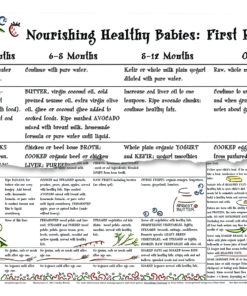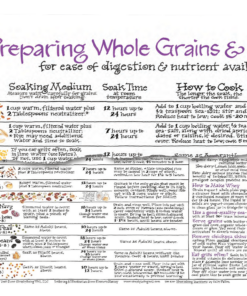Following the GAPS (Gut and Psychology Syndrome) diet at home can be challenging enough, but come the holidays even the most experienced GAPS cooks can be stretched to the limits. Travel—no matter when, no matter why, no matter if it’s by plane, train, or automobile—means eating outside the home. But the following simple rules will help you navigate restaurants and gatherings and avoid common food pitfalls, whether it’s a trip to Grandma’s house or lunch out with a friend.
If you are on GAPS, and especially if you are on the Intro diet, the safest and healthiest option is to eat your own food at home before you go out, or bring your own food with you. Both options ensure that you will get the nutrition you want and need, and you will not get the toxins that are in most conventional food. However, there are some situations when these options just are not workable. If you are part of a group eating out in a restaurant, choosing not to eat can be a bit awkward. And option two, bringing your own food, would likely be prohibited by the restaurant itself, as well as food service sanitation laws (though it could work if you are visiting somebody’s home).
If you are on the Full GAPS diet and decide to eat out at a restaurant, or your travel plans demand it, your best option is to avoid all the no-nos: no grains, no beans (except lima beans, green beans, lentils, and white navy beans), no starchy vegetables (potatoes or sweet potatoes being the most obvious), no dyes, no processed foods, no soy, no sugar, no additives. However, instead of trying to remember all of these rules, it may be easier to keep in mind that GAPS, at its core, is about eating the best quality food—protein, vegetables, and good fats—that you can find. (While cultured dairy products such as yogurt and cultured cream are also allowed, what you will likely find in a restaurant will not have been cultured long enough to be lactose-free, so best to avoid it.)
Now let’s get to the details.
In order to avoid as many problematic foods as possible at a restaurant, let your waiter know up front that you are gluten-free, grain-free, lactose-free, sugar-free, and soy-free. Also, bring your own sea salt or high mineral salt because most restaurants use iodized table salt, which supplies little to no minerals. Restaurants also use butter substitutes, usually highly processed blends that contain soy, so you should also bring your own ghee or coconut oil (these do not need to be refrigerated, and you can carry them in your purse or bag). Bringing your own good quality fats is a good idea because you need them to absorb whatever nutrients are in your food.
Protein: Choose wild-caught fish, pastured poultry and eggs, or grass-fed beef if at all possible. If you find yourself in restaurant that does not offer any of these options, your least toxic option would be lamb, which is often raised outside of the “food industrial complex” and not associated with confinement operations. Beef and bison are finished on grain (GMO soy and corn) in feedlots, and pork is usually raised in confinement on feedlots as well. Ask for your lamb or other protein to be grilled dry in order to avoid eating butter substitutes.
Vegetables: If at all possible, visit restaurants that offer organic options. Order salad with lemon only, or with lemon and olive oil if the waiter or chef can guarantee that the olive oil is pure and not cut with soybean or canola oil. (If organic salad greens are not available, you may wish to skip salad altogether because of the toxins sprayed on lettuce, tomatoes, and cucumbers.) Ask for lightly steamed vegetables, and use your own ghee or coconut oil to dress them. Use your sea salt liberally for the minerals it provides. If the restaurant offers lacto-fermented vegetables such as sauerkraut, kimchee, daikon radish, pickles, or carrots, have them!
Healthy fats: As I mentioned above, the majority of restaurants use butter substitutes made of canola and soy oils and olive oil that has been cut with the same. To ensure you get the fat that you need when eating out, carry your own.
What about stock or broth or soup? Unfortunately, even restaurants that claim their stocks or soups are “homemade” use stock or soup bases that are full of soy protein. If you want to venture into stock or soup territory, ask the chef if they make their own stock from bones, in their own kitchen. If they do not, it is best to avoid their soups. Otherwise, you risk a whole host of food additives and compounds your liver will not feel good about.
I can recommend two resources that can be helpful for when you need to eat out. First, I recommend that you familiarize yourself with the annually updated “Dirty Dozen” and “Clean 15” lists from the Environmental Working Group (EWG). As you can probably tell from the name, the Dirty Dozen lists the most toxic fruits and vegetables, which you should therefore eat organic or don’t eat at all. The Clean 15 lists the least toxic fruits and vegetables, which are therefore safe to purchase conventional. If you are at a restaurant (or a friend’s house) that doesn’t do organic, try to stick to produce from the Clean 15.
The second resource is from the Weston A. Price Foundation, which has a fledgling restaurant finder called 12 Spoons. The goal is to identify restaurants that follow WAPF dietary principles. Very helpful for those trying to eat clean, and especially those on GAPS. (Registration required for access, but well worth it).
Just a closing note—don’t stress about it! Eating out is not the norm for you. You have already done a lot of healing, and you will continue to do so. Your body is resilient. Trust that it will do its best to work with what you provide it. Whatever and whenever you eat, do so in a relaxed state so that you can digest your food. And if you eat something that is not on the diet, you can always do better tomorrow.
Image from iStock/nicoletaionescu.




